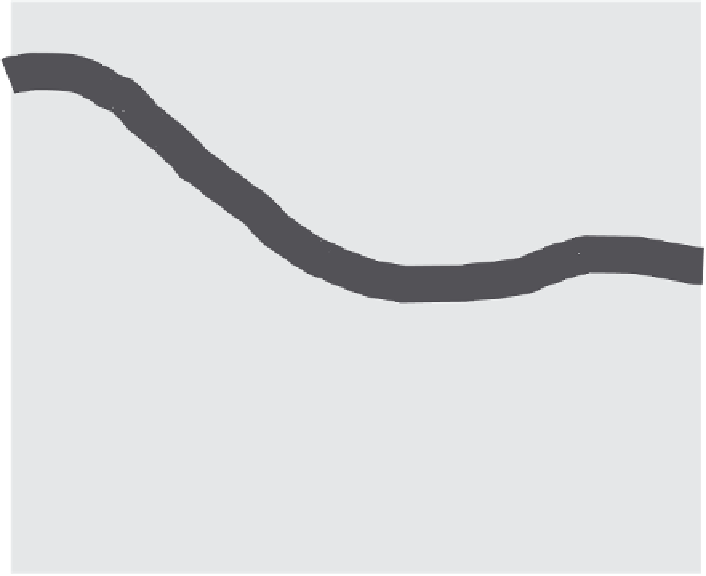Database Reference
In-Depth Information
Key
Unimproved grassland
Spider sighting + 50m buffer
Invasive plant
FIGURE 4.1
Distribution of Spiders and Plant in unimproved grassland within 20 m of
the river.
4.3.1.4 Observations and Discussion
In this example, the integration between the datasets is loose and relies entirely on
the spatial calculations made to determine the relationship between the plant loca-
tions and those of unimproved grass and the rare spider. These relationships are
therefore not explicit and calculated arithmetically using the underlying geometry
associated with the various locations (riverbank, unimproved land, plant locations,
and spider sightings). When selecting the datasets, there was no standard way to
establish whether a dataset actually contains the right data. This is a semantic issue:
Was the understanding of unimproved grass the same for both producer and analyst?
And, it was also necessary to understand the detailed structure of datasets and
restructure them to a suitable format to be loaded into a GIS. The results of the GIS
analysis are shown in Figure 4.1.
How much easier might things be if the problem was approached in an envi-
ronment where the Semantic Web was well established, with many datasets avail-
able as Linked Data and semantically described through ontologies? The answer
is that some stages will be easier and some not at all or only a little. Acquiring
data will become easier. Ideally, it would be possible to query the Semantic Web to
look for appropriate datasets and then use the detail of the ontological description to










































































































































































































































































